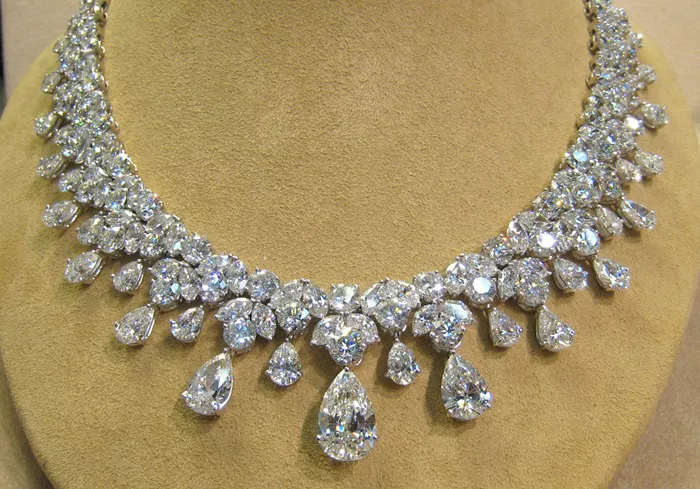In the ever-evolving world of gemstones, lab-grown diamonds have emerged as a significant alternative to natural diamonds. As the popularity of lab-grown diamonds increases, so does the need to distinguish them from their natural counterparts. This raises a crucial question: Can a jeweler tell if a diamond is lab-grown? In this detailed article, we explore the methods used to identify lab-grown diamonds, the challenges faced by jewelers, and the advancements in technology that aid in the detection process.
Understanding Lab-Grown Diamonds
Before delving into detection methods, it is essential to understand what lab-grown diamonds are. Lab-grown diamonds, also known as synthetic or cultured diamonds, are created in controlled environments that mimic the natural conditions under which diamonds form in the Earth. There are two primary methods for producing lab-grown diamonds:
High Pressure High Temperature (HPHT): This method replicates the natural conditions of diamond formation by subjecting carbon to extreme pressure and temperature.
Chemical Vapor Deposition (CVD): This technique involves creating a diamond film on a substrate by using a carbon-rich gas and applying energy to facilitate diamond growth.
Lab-grown diamonds possess the same physical and chemical properties as natural diamonds, making them virtually indistinguishable to the naked eye.
Detection Methods for Lab-Grown Diamonds
Despite their similarity to natural diamonds, several methods can be used to identify lab-grown diamonds. These methods range from basic visual inspections to advanced technological techniques.
Visual Inspection
One of the initial steps in identifying a lab-grown diamond involves a visual inspection under magnification. Jewelers look for certain characteristics that might indicate a diamond’s origin:
Inclusions: Lab-grown diamonds may contain inclusions or flaws that differ from those found in natural diamonds. For example, HPHT diamonds often show metallic inclusions from the growth process, while CVD diamonds might exhibit different types of internal features.
Color: Lab-grown diamonds can sometimes exhibit unusual color zoning or fluorescence under UV light, which can be a clue to their synthetic origin.
Diamond Certification
Professional gemological laboratories issue certificates for diamonds, including lab-grown ones. These certificates provide detailed information about the diamond’s properties, including its origin. Reputable labs such as the Gemological
Institute of America (GIA) and the International Gemological Institute (IGI) offer specialized grading reports for lab-grown diamonds, which can help jewelers and buyers distinguish between natural and synthetic stones.
Diamond Testing Tools
Jewelers use various tools and instruments to identify lab-grown diamonds. Some of the most common tools include:
Diamond Testers: Traditional diamond testers measure thermal conductivity to determine whether a stone is a diamond. However, these testers may not differentiate between natural and lab-grown diamonds, as both types exhibit similar thermal properties.
Spectroscopy: Advanced instruments like infrared and Raman spectroscopy can analyze the molecular structure of a diamond to detect specific features indicative of lab-grown origins. These techniques can provide detailed information about the diamond’s growth process and characteristics.
Photoluminescence: This method involves exposing the diamond to ultraviolet light and analyzing its fluorescence. Lab-grown diamonds often exhibit unique fluorescence patterns that differ from natural diamonds.
Challenges in Detection
While technology has advanced significantly, detecting lab-grown diamonds remains challenging for several reasons:
Similarity to Natural Diamonds: Lab-grown diamonds possess the same physical and chemical properties as natural diamonds, making them difficult to differentiate without specialized equipment.
Advancements in Technology: As lab-grown diamond technology improves, new detection methods are continuously developed to keep pace with these advancements.
Cost and Accessibility: High-tech equipment used for detecting lab-grown diamonds can be expensive and may not be accessible to all jewelers.
See also: How Important Is Color in Diamond Studs?
Technological Advancements in Detection
To address the challenges of identifying lab-grown diamonds, researchers and gemologists are developing new technologies and methods. Some notable advancements include:
Automated Detection Systems: New automated systems can analyze diamonds quickly and accurately, using advanced algorithms and machine learning to identify lab-grown stones.
Improved Spectroscopic Techniques: Researchers are refining spectroscopic methods to enhance their sensitivity and specificity, allowing for more precise identification of lab-grown diamonds.
Public Awareness and Education: Efforts to educate jewelers and consumers about lab-grown diamonds and detection methods are increasing, helping to improve overall industry knowledge and practices.
Conclusion
In conclusion, while jewelers can identify lab-grown diamonds using a combination of visual inspection, certification, and advanced testing tools, the process remains complex due to the similarities between lab-grown and natural diamonds. Technological advancements continue to improve detection methods, but challenges persist. Understanding these methods and staying informed about new developments in the field are crucial for jewelers and consumers alike.
As the market for lab-grown diamonds grows, it is essential for industry professionals to be equipped with the knowledge and tools to accurately distinguish between natural and synthetic stones. By doing so, they can ensure transparency and maintain the integrity of the gemstone industry.

